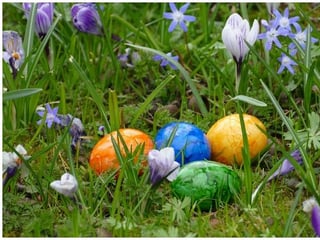Why do we have Easter eggs? Tradition of chocolate eggs explained - and Easter egg design ideas


But have you ever wondered why we indulge in Easter eggs at this time of year?
Here’s what you need to know about Easter eggs and other traditions related to the Christian holiday.
Why do we eat Easter eggs?
Advertisement
Hide AdAdvertisement
Hide AdWhile today lots of us enjoy chocolate eggs at Easter, in the past eating eggs was not permitted by church leaders in the week leading up to Easter, known as Holy Week.
So during that time, any eggs laid were saved and decorated to make them Holy Week eggs, which were then given to children as gifts.
It’s thought that we have eggs at Easter to mark the end of lent, and also because eggs are a symbol of new life, much in the same way that Christian’s view Jesus’ resurrection.
As tradition has evolved, chocolate eggs are much more popular as gifts for children than real eggs.
The first ever chocolate Easter egg was manufactured in 1873 by J.S Fry & Sons, with Cadbury then producing the modern chocolate Easter egg that we know today in 1875, which was made after developing a pure cocoa butter that could be moulded into smooth shapes.
Similarly, a lot of people give up chocolate for lent, so being able to indulge in some chocolate Easter eggs is a great way to mark the end of the Christian fasting period.
What are some Easter egg traditions?
There are lots of Easter egg related traditions you can get involved with this Easter to celebrate.
Here are some of the most popular.
Rolling eggs
Rolling Easter eggs is a favoured activity, and for some Christians the Easter egg roll is a symbolic re-enactment of rolling the stone away from Christ’s tomb.
Advertisement
Hide AdAdvertisement
Hide AdTo roll an Easter egg, all you have to do is find a suitable hill to roll your egg down.
But with current government guidelines dictating that people stay at home, you can alternatively roll your egg down some stairs.
Painting eggs
Painting Easter eggs is also a beloved tradition that the whole family can get involved with. You’ll need real eggs for this one, not ones of the chocolate variety.
Simply hard boil some eggs in boiling water for about 10 minutes. After they’ve cooled down, you can paint them however you please.
Dyeing eggs
Instead of painting your eggs, you can always try your hand at dyeing them instead.
Traditionally, people would dye their eggs the colour red, to represent the blood of Christ, with the hard shell of the egg symbolising the sealed tomb and the cracking of the shell representing his resurrection from the dead.
To dye eggs, you’ll need food colouring (or natural dyes like beetroot or onion skins).
Decide whether you want to keep your eggs once they’ve been dyed, or if you’re okay with discarding them. If you decide you want to keep your eggs, you’ll need to hollow them out.
Hollow your eggs by following these instructions:
Advertisement
Hide AdAdvertisement
Hide Ad- Use something sharp like a needle or a sharp knife to prick holes at the top and bottom of the raw egg
- Use a skewer or needle to swirl around inside the egg to break up the yolk
- Blow into one end of the egg to get the inside out through the other end of the egg
If you’re okay with discarding your eggs once they’re finished with, you can skip that step.
Next prepare your dye. In a bowl, mix a teaspoon of food colouring, a tablespoon of vinegar and enough warm water to cover the egg.
A fun trick is to wrap elastic bands around the egg to create intricate patterns with the dye.
Easter egg hunts
Easter egg hunts are a great activity you can take part in, whether you have a garden or not.
Simply hide Easter eggs around the garden or around the house and let the rest of the family get hunting. The aim of the game is to collect more eggs than anyone else.
